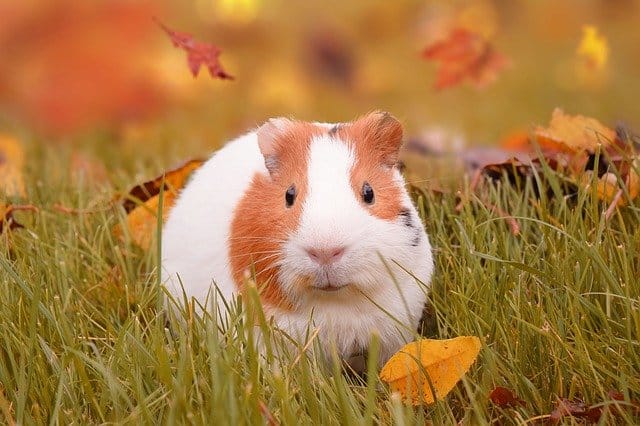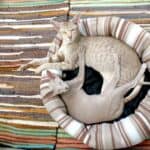
The guinea pig , or domestic guinea pig, is a sociable and lively small rodent. To ensure its well-being it is advisable to adopt it as a couple with another specimen.
The guinea pig (scientific name Cavia porcellus Pallas ), also known as the domestic guinea pig , is a small rodent native to South America . Having become synonymous with a laboratory animal, the guinea pig is actually one of the most popular pets .
In some South American countries it is also served as food. There are no univocal explanations for the origin of the name “little pig”. It may have been named after the sound emitted by this animal, very similar to that of pigs. Alternatively, its appearance, along with its voracity, might suggest a miniature pig.
They are medium-sized rodents : males are about 20 cm long and weigh 1.25 kg. The average age of these specimens varies between 4 and 8 years. However, in optimal living conditions they can also be much longer.
Guinea pig character
They are social animals and love to live in small groups consisting of males and females. Domestic specimens have habits different from those typical of wild life. They have, in fact, adapted their rhythms so that they can be active throughout the day with short rest intervals.
Compared to other types of rodents, they do not require particular physical exercise since in the wild they did not need to develop special motor skills. Therefore they do not like to jump or climb, but they can easily overcome small obstacles. In nature, they live in very luxuriant flat areas and concentrate their activity around the twilight hours. This way they reduce the risk of being attacked by predators.
Guinea pig: the different breeds
Domestic guinea pigs can belong to different types of breeds . The most common as pets are the short-haired guinea pigs, the Abyssinian , Peruvian and the sheltie breeds . The dimensions are more or less the same, while the hair can vary considerably both in length and in color.
Guinea pigs can generally have three different colors from each series. The black series includes black, chocolate, lilac and beige. The red series includes red, orange, suede, cream and white. Other specimens may be white.
Long-haired guinea pig
Although there are no substantial differences between the long-haired and the short-haired species, it should be remembered that the long-haired guinea pig must be periodically brushed. Occasionally, he may need a little hair trim.
Baby guinea pig
As soon as they are born, the puppies are able to move and, after a week of birth, they already tend to move to explore the environment. After a few days they can begin to eat solid foods while continuing to breastfeed. The fertile age of both males and females begins as early as the third week of life.
Guinea pig feeding
This rodent is strictly herbivorous so it follows a totally vegetable diet. It is therefore necessary to guarantee the presence of foods such as fresh and raw fruit and vegetables together with hay. The consumption of fiber is important for the good functioning of the intestine.
Equally important is the chewing with which this animal ensures the right length of the teeth, which tend to grow continuously. Another aspect to be aware of is the risk of vitamin C deficiency to which this animal tends to be prone.
For this reason, it may be advisable to purchase specific foods to make up for any shortcomings.
Guinea pig cage
When deciding to adopt a pet, it is always necessary to satisfy its ethological needs. In the arrangement it is necessary to choose a spacious cage and able to accommodate one or more specimens. The bottom of the cage must be solid to avoid injuring the legs. You can choose to use a litter made of absorbent material.
Under the litter you can arrange sheets of newspapers to facilitate the daily cleaning of the cage. Inside must be placed a container for food and a drip trough for water. Also, it is good to place the guinea pig in a quiet and sheltered place in the house.
Particular precautions must be taken in case of cohabitation with other pets, such as dogs and cats , for which the guinea pig could represent a potential prey.
Price guinea pig
The cost of purchasing this animal is not very high and is usually around $30 to $40. It is also possible to adopt some specimens through the exchange between individuals. Furthermore, it is also possible to hypothesize the recovery of any laboratory specimens.
It is obviously necessary to consider the costs related to the care of the animal: litter, feeding and periodic checks at a specialized veterinarian .






